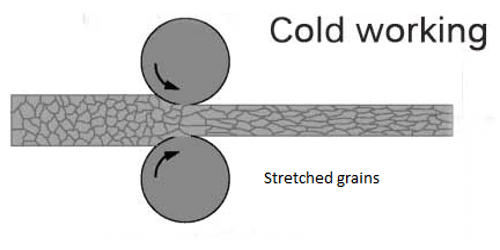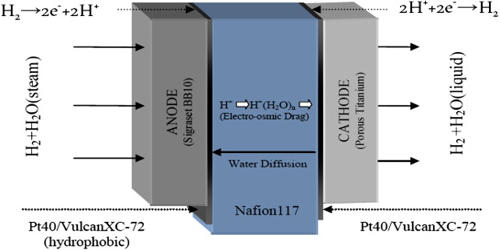Cold working refers to the process of strengthening metal by changing its shape without the use of heat. It is the plastic deformation of metals below the recrystallization temperature. It is also known as cold forming, which is any metalworking process in which metal is shaped below its recrystallization temperature, usually at the ambient temperature. Such processes are contrasted with hot working techniques like hot rolling, forging, welding, etc. The process gets its name because it is conducted at temperatures below the metal’s recrystallization point. This is a technique commonly used in non-brittle metals that have remarkably elevated melting points. The major cold-working operations can be classified basically as squeezing, bending, shearing, and drawing.
Cold forming techniques are usually classified into four major groups: squeezing, bending, drawing, and shearing. When these metals are cold worked, permanent defects change their crystalline makeup. They generally have the advantage of being simpler to carry out than hot working techniques. These defects reduce the ability of crystals to move within the metal structure and the metal becomes more resistant to further deformation.
The possible uses of cold forming are extremely varied, including large flat sheets, complexly folded shapes, metal tubes, screw heads and threads, riveted joints, and much more. It is the most common method of work hardening. This involves the metal being passed through pairs of rollers to reduce its thickness or to make the thickness uniform.
Advantages
Advantages of cold working over hot working include:
- No heating required
- Better surface finish
- Superior dimensional control
- Better reproducibility and interchangeability
- Directional properties can be imparted into the metal
- Contamination problems are minimized
Depending on the material and extent of deformation, the increase in strength due to work hardening may be comparable to that of heat treating. Cold working of metals can be done by various methods including cold rolling, pressing, drawing and deep drawing, etc. It is also used to produce residual stress into certain metals in order to have improved fatigue life, e.g., by shot peening in case of leaf springs.
Disadvantages
Some disadvantages and problems of cold working are:
- The metal is harder, calling for greater forces, harder tools and dies, and heavier equipment
- The metal is less ductile and malleable, limiting the amount of deformation that can be obtained
- Metal surfaces must be clean and scale-free
- May leave undesirable anisotropy in the final piece
- May leave undesirable residual stress in the final piece
The need for heavier and equipment and harder tools may make cold working suitable only for large volume manufacturing industry. A simple example to represent these disadvantages is a nail that corrodes in parts where it has been bent or hammered.
















